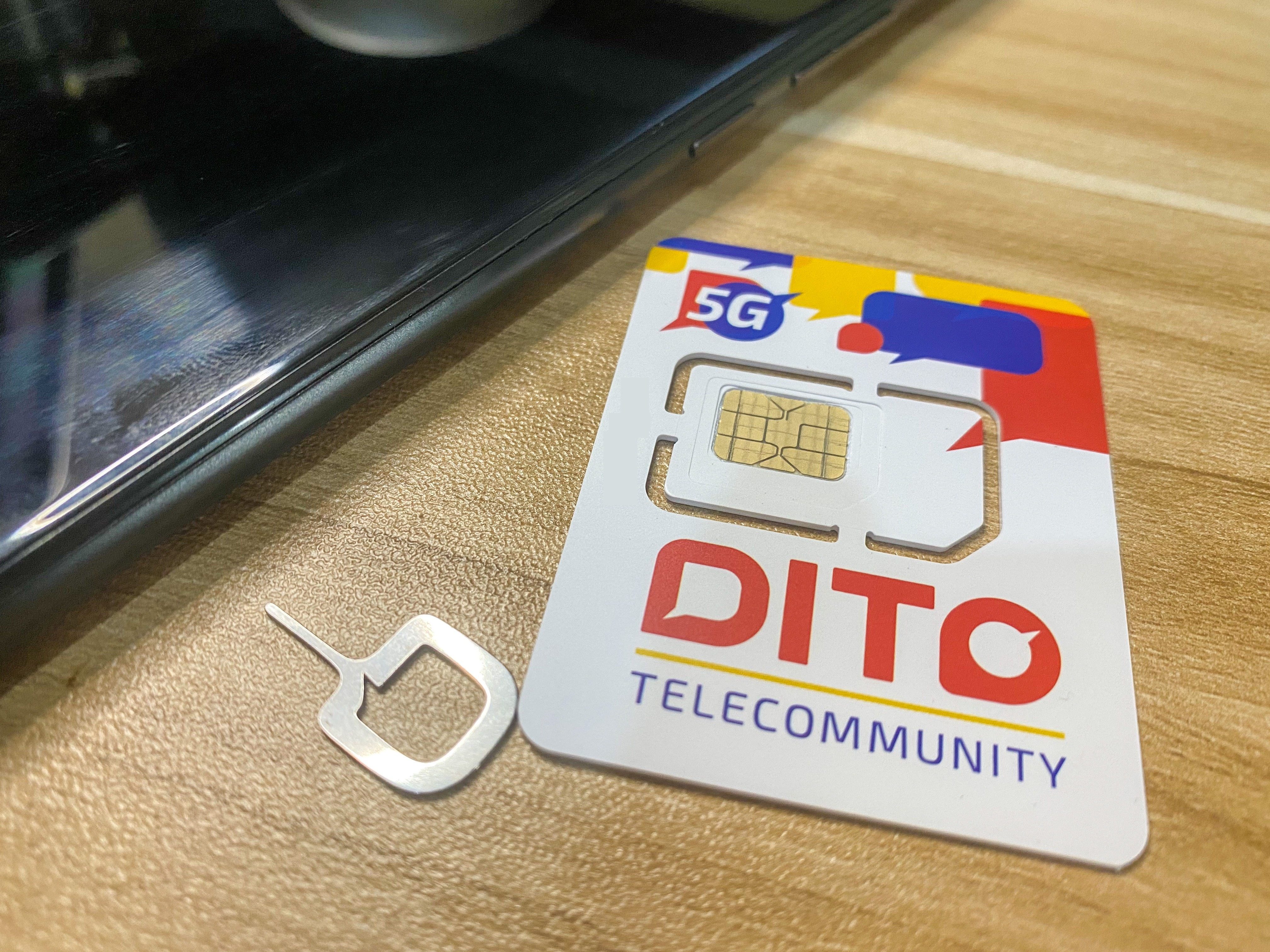SUMMARY
This is AI generated summarization, which may have errors. For context, always refer to the full article.

Dito Telecommunity launched its services in Metro Manila on Monday, May 17, in a bid to pursue a “very aggressive” expansion as part of its commitments to the government.
Since its commercial launch in March, which was initially in the Visayas and Mindanao, Dito chairman Dennis Uy said the third telco player has now reached over 100 cities and municipalities.
In the first two months of the rollout, its subscriber count reached 500,000 in 54 cities and municipalities.
Aside from Metro Manila, Dito is also now available in the following areas:
Rizal
- Taytay
- Cainta
- Antipolo City
Bulacan
- Malolos City
- Meycauayan City
- Marilao
- San Jose del Monte City
- Bocaue
- Hagonoy
- Bulakan
Bataan
- Balanga City
- Dinalupihan
Zambales
- Subic
- Olongapo City
Tarlac
- Moncada
Pampanga
- Angeles City
- Mabalacat City
- Mexico
- Guagua
Laguna
- Cabuyao City
- San Pedro City
- Santa Rosa City
- Biñan City
Batangas
- Cuenca
- San Jose
Cavite
- Carmona
- Dasmariñas City
Cebu
- Lapu-Lapu City
- Dumanjug
Dito’s introductory promo of P199, also launched on Monday, includes 25 gigabytes of data, unlimited texts to all networks, unlimited Dito-to-Dito calls, and 300 minutes worth of calls to other networks. The promo runs until June 30, valid for 30 days upon subscription.
Dito chief administrative officer Adel Tamano is confident that the current rate of increase in users is “sustainable” – which would mean about 2.5 million subscribers by the end of 2021.
While dominant players Globe Telecom and PLDT saw strong growth in their fixed-line businesses versus wireless services, Tamano believes that Dito’s product is even more “relevant because it’s fast.”
Dito earlier said it has plans of venturing into the fixed broadband business in 2022, but chief technology officer Rodolfo Santiago on Monday raised the challenge of laying out the infrastructure due to restrictions.
According to its commitment for the second year of operations, Dito should have a minimum speed of 51 megabits per second (Mbps) and should be able to cover 51% of the population. The second technical audit will be in July.
To achieve the committed speed, Santiago said Dito is eyeing to roll out 5G services.
‘Birth pains’
Just in its second month of operations, Dito is undeniably facing “birth pains.”
Unlike Globe and Smart SIM cards, Dito SIM cards are compatible only with select handsets. Just a number of phones under the following brands – usually the newly released handsets with Voice over LTE or VoLTE capability – can utilize Dito’s services without a hitch:
- Samsung
- Huawei
- Vivo
- Oppo
- Cherry Mobile
- TCL
- Tecno
- Realme
- Xiaomi
- Infinix
To see the full list of compatible handsets, click here.
Santiago said some phones, Apple’s iPhone included, have yet to be “100% compatible” with Dito SIM cards. He also reiterated that phones with legacy services 2G and 3G will not be able to use their services.
“There are birth pains. Help us to improve our services as we are doing our best to give superior service. But of course, there will be some bumps along the way,” said Santiago in a mix of English and Filipino.
Rappler tried using a Dito SIM card on an iPhone 11 Pro and ran multiple speed tests on Monday afternoon. While it worked, 4G-LTE download speeds were under 4 Mbps while the upload speed averaged 3 Mbps in the City of Manila.
There were times that the test for upload speed failed while on the Makati City server. At times, the upload speed went as high as 7 Mbps when connected to the server in Carmona, Cavite.
To compare, speed tests using an iPhone 11 Pro with Smart registered a 63.7-Mbps download speed and around 3-Mbps upload speed. With Globe, the download speed averaged 7.33 Mbps while the upload speed was about 2 Mbps. Both telcos have rolled out 5G services within Manila and several other areas.
Rappler also tried using a Dito-compatible phone but the results were even slower – about 2 Mbps for the download speed and an average of 1.8 Mbps for the upload speed.
Of course, speed varies depending on one’s location and the device’s connection capability, among other factors.
Santiago also explained on Monday that users outside the “polygon of coverage” – or areas where their services have yet to be available – may not have signal. If ever weak signal is available in those areas, Dito does not count that when computing the minimum average speed.
“In some areas, we have some challenge in terms of rollout. We may not be superior to the incumbents,” Santiago said. – Rappler.com
Add a comment
How does this make you feel?

There are no comments yet. Add your comment to start the conversation.